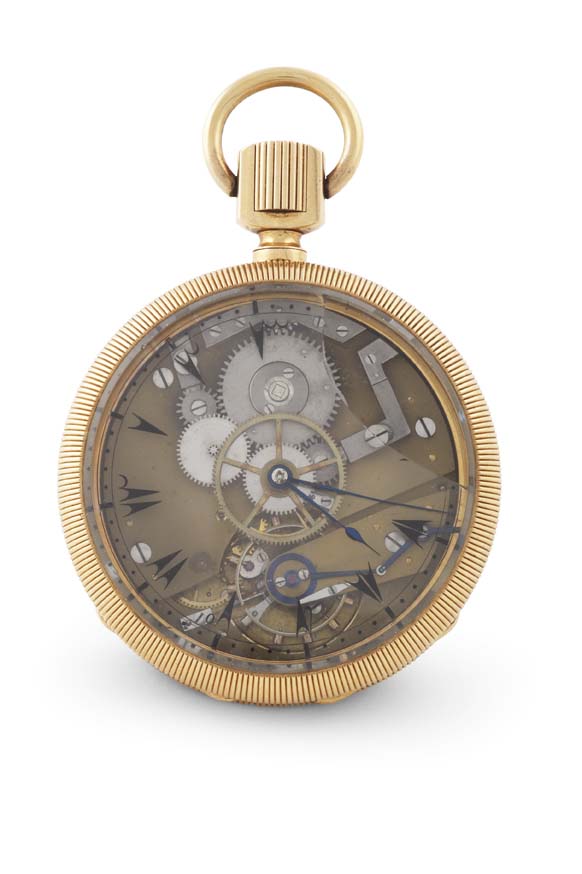An Ottoman Royal presentation gold watch
£31,250
Auction: 1 December 2009 at 11:00 GMT
Description
keyless wind, glazed double sided case with visible movement, glass dial with Turkish numerals, skeleton movement below, plain blued hands, milled bezel, the reverse cream ground dial with four dials and inscribed in Ottoman Turkish 'Sahib Mehmed Rasim' translated to 'Owner; Mehmed Rasim'; the next cartouche 'Eser-i Mehmed Sukri' translated to 'The work of Mehmed Sukri' the bottom cartouche 'min telamiz-i Seyyid Ahmed Dede' translates to 'a pupil of Seyyid Ahmed Dede' the dials reading from right to left, top right month showing lunar calendar, day indicated in the outer ring; top left dial shows the month according to the Julian calendar; bottom left shows days of the week; the bottom left dial for seconds, engraved border of foliate scrolls and inscribed ' Presented to Sir Henry Layard by the Sultan 1879'
Dimensions
Dial, 48mm diameter
Footnote
Layard was born in Paris, France, to a family of Huguenot descent. Much of Layard's boyhood was spent in Italy, where he received part of his schooling, and acquired a taste for the fine arts and a love of travel. After spending nearly six years in the office of his uncle, Benjamin Layard, he was tempted to leave England for Ceylon by the prospect of obtaining an appointment in the civil service, and he started in 1839 with the intention of making a journey across Asia.
After long travels chiefly in Persia, he returned in 1842 to Constantinople, where he made the acquaintance of Sir Stratford Canning, the British Ambassador, who employed him in various unofficial diplomatic missions in European Turkey. In 1845, Layard left to make those explorations among the ruins of Assyria with which his name is chiefly associated. This expedition excited his curiosity in the ruins of Nimrud on the Tigris, and by the great mound of Kuyunjik, near Mosul. Layard discovered the world famous Cyrus cylinder, circa 539-530 BC now in the British Museum
Layard now turned to politics. Elected as a Liberal member for Aylesbury, Buckinghamshire in 1852, he was for a few weeks Under-Secretary for Foreign Affairs, but afterwards freely criticized the government, especially in connection with army administration. He was present in the Crimea during the war, and was a member of the committee appointed to inquire into the conduct of the expedition.. After being defeated at Aylesbury in 1857, he visited India to investigate the causes of the Mutiny. He was elected for Southwark in 1860, and from 1861 to 1866 was Under-Secretary for Foreign Affairs After the Liberals returned to office in 1868 under Gladstone, Layard was made First Commissioner of Works and sworn of the Privy Council.
Layard resigned in 1869, on being sent as envoy extraordinary to Madrid. In 1877 he was appointed by Lord Beaconsfield, to Ambassador at Constantinople, where he remained until Gladstone's return to power in 1880, when he finally retired from public life. In 1878, on the occasion of the Berlin Congress, he was appointed a Knight Grand Cross of the Order of the Bath.
Layard retired to Venice, where he devoted much of his time to collecting pictures of the Venetian school, and to writing on Italian art. His collection of Venetian paintings were donated to the nation

